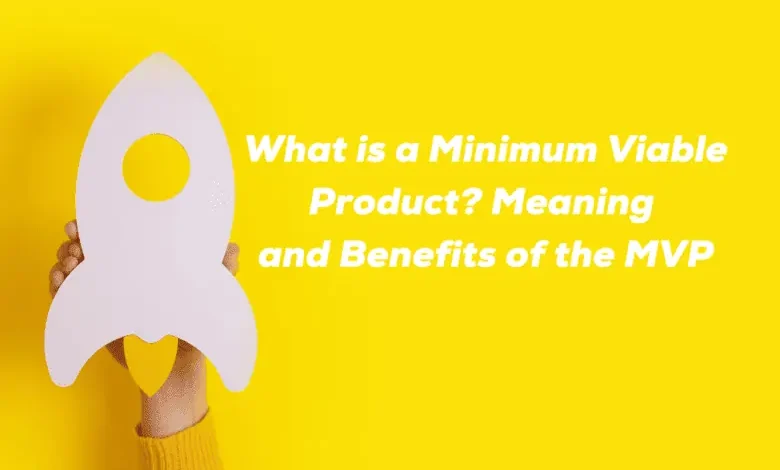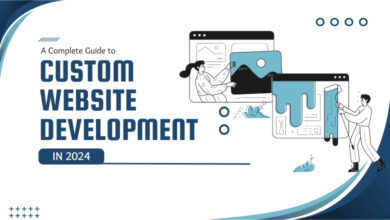What is a Minimum Viable Product? Meaning and Benefits of the MVP

A Minimum Viable Product or MVP plays a key role in product development. It is a version of the product with enough features to get feedback from users. MVPs help validate ideas fast with less effort. They are an efficient way to develop products users want. This article covers what an MVP is, why it matters, and how to build a good one.
What is the Definition of a Minimum Viable Product?
An MVP is a basic version of a product. It has just enough features to be usable by early customers. The goal is to test ideas and get feedback quickly. MVPs focus on the critical functions that must solve users’ core needs. Everything else is left out, to start. This approach is about learning what users want as fast as possible.
According to experts, an MVP is the version of a new product that allows a team to collect the maximum amount of validated learning about customers with the least effort.
The aim is to find out if the product concept is worth pursuing further. MVPs are not about building fully featured products right away. The goal is to start the learning process as early as possible.
What is the Main Purpose of Building an MVP?
The key goal of an MVP is to validate if a product idea resonates with users. It helps answer questions like:
- Is there a real market need for this product?
- Are users interested in the core features?
- How can the product be improved to suit users better?
MVPs are highly effective in enabling fast learning about users. MVPs are like a helpful plan that lets startups figure out what users like. They help test our ideas about what users want and make sure we’re on the right track. In fact, MVPs are instrumental in addressing the critical question of how to develop minimum viable product because they provide a practical approach to building a product that aligns with user needs. Quick learning is super important in making products. Did you know that 42% of startups fail because they make things nobody likes? Well, MVPs help avoid that. They’re like a cool tool to make sure we spend our resources wisely on stuff that people actually want. MVPs let us try things out and make our product better by listening to what users say, so it becomes a hit with them.
.In essence, MVPs minimize time and money wasted on building the wrong products. They allow “smart failure” by testing ideas quickly and cheaply. Adjustments can be made early based on insights gained from an MVP’s limited feature set.
What are the Key Benefits of Building a Minimum Viable Product?
Developing an MVP offers several advantages:
1. Faster Time to Market
MVPs help launch products faster. They allow startups and businesses to release an early version quickly to gain a competitive edge.
Per research, 52% of companies say speed to market is very important. MVPs enable validating product-market fit rapidly without prolonged development cycles. This quicker time to market helps acquire early adopters. Their feedback further refines the product.
For example, landing pages with core features are a type of MVP. They can be created fast to start the evaluation process. The speed advantage helps bring products to market rapidly.
2. Cost Efficiency
MVPs minimize required resources. By focusing on the essential features only, MVPs avoid building complex products upfront. This results in lower development costs.
Studies show using MVP principles can reduce product development costs by 50%.
Avoiding unnecessary features early on keeps teams lean and spending focused. This conserves budget for future product refinement based on user data.
MVPs enable maximizing return on investment. Companies avoid investing in features users may not want. Targeted spending on an MVP’s bare essentials is financially prudent.
3. User-Centered Design
MVPs put user feedback at the heart of product development. The testing and learning process provides ongoing user input to guide design.
Per research, user-centric design makes businesses 86% more likely to achieve superior performance. MVPs incorporate user perspectives right from the start. They embrace continuous iteration based on end-user data rather than guesses. This ensures the product evolves to meet user needs better over time.
MVPs offer faster market delivery, cost savings, and user-focused development. These benefits make them a popular modern product development strategy.
How to Develop a Successful Minimum Viable Product
Follow these tips to build an effective MVP:
Define Clear Goals
Set specific hypotheses and questions the MVP aims to test. For example:
- Does the target audience need this product?
- Will they find the core features useful?
- How frequently might they use it?
Clear goals help focus product development and measurement. The MVP can then test predefined hypotheses through experiential user learning.
Identify Must-Have Features
Resist cramming too many features into the MVP. Select features that address the core problem to solve. Additional elements can be added later. Understand which features can be excluded temporarily to accelerate development.
Prioritize the riskiest assumptions and test those first. For example, test whether users find the core functionality compelling before building secondary features. Outline which features are absolutely essential for initial testing.
Test and Get Feedback
Conduct user testing early to validate if the MVP hits the mark. Ask users for honest feedback on their experience. Probe on what they liked or felt was missing. Test whether they would use or recommend the product.
Feedback reveals improvements users want most. It shows which features resonate and which need rethinking. Such insights guide the next development cycles. Continual testing and user input bolster product-market fit.
Common Myths and Misconceptions About Minimum Viable Products
Some common misconceptions about MVPs need clarification:
Myth: MVPs are Low Quality Products
Reality: MVPs should offer sufficient quality and value. They focus on solving users’ high-priority problems early with a streamlined feature set. MVPs are not about cutting corners or releasing poor products. Their leanness aims to facilitate rapid learning.
Myth: MVPs Are Only For Startups
Reality: While startups benefit greatly from MVPs, established companies can gain advantages too. MVPs provide opportunities to experiment with new technologies, test new markets, or try out product variations. This helps larger firms expand strategically.
Conclusion
In summary, a minimum viable product or MVP offers immense value in product development. MVPs allow building a scaled-down version fast to gather user insights cost-effectively. This avoids wasteful spending on unused features early on. Though simple, MVPs enable data-driven decisions based on real user experiences, not assumptions.
Applying MVP principles smartly helps companies maximize product-market fit and success potential. By starting with an MVP, product teams can continuously improve the product based on empirical user data rather than guesses. This modern Lean approach to product development ensures user needs are met efficiently. In the fast-moving world of business, rapid experimenting through MVPs grants a competitive edge.
If you’ve found inspiration in this article, make sure to check out related content and stay tuned for thrilling updates.
Frequently Asked Questions About Minimum Viable Products
1. How do I decide what features to include in an MVP?
Prioritize must-have features users need most. Analyze which features support core functionalities. Consider which elements can be tested with users first in building the MVP versions. leftovers can be added later. Focus on validating riskiest assumptions fast.
2. Can I skip the MVP process and launch the full product directly?
Launching a complex product without validation is risky. MVPs help test assumptions safely first. They provide user feedback to incorporate in later. Skipping this gives no room to refine the product early, resulting in avoidable failures. It’s wise to experiment first via MVPs.
3. Is an MVP a prototype?
An MVP is not the same as a prototype. A prototype demonstrates technical function only. An MVP tests an idea’s underlying business model early on. While prototypes have limited user engagement, MVPs focus heavily on maximizing user feedback for refinement.






